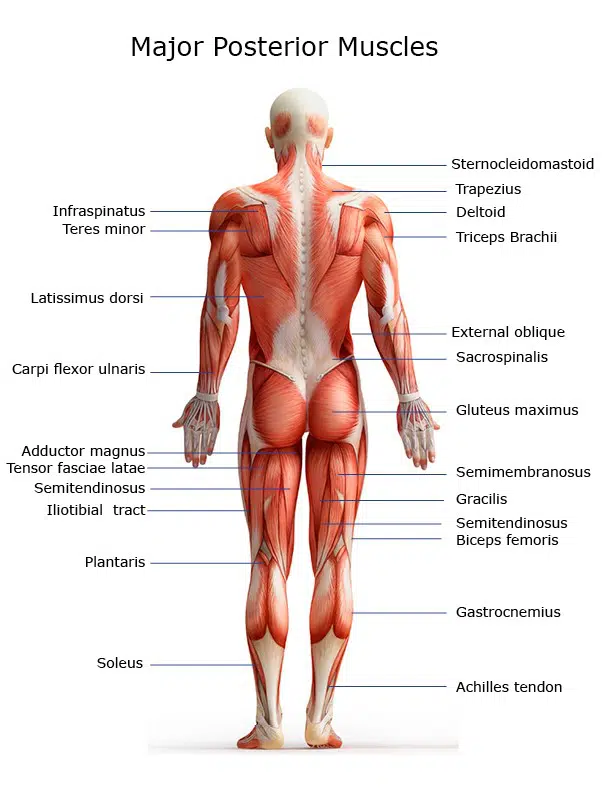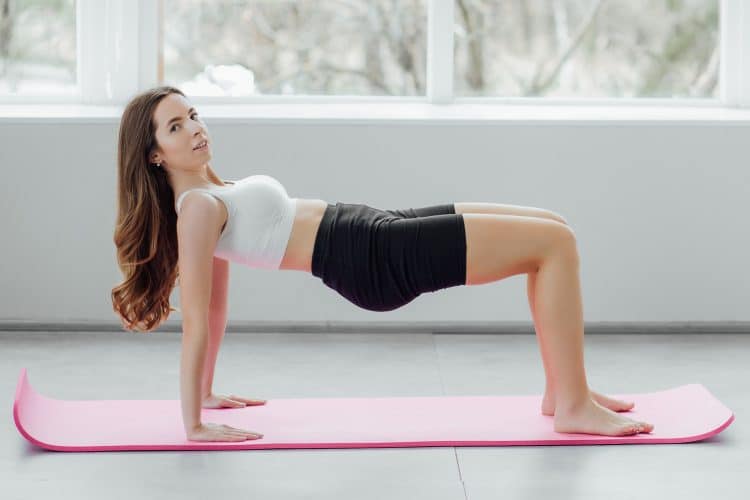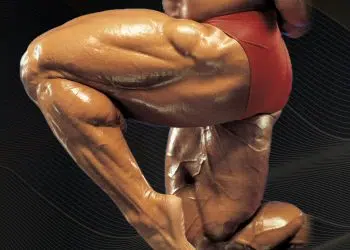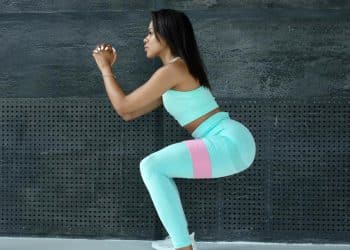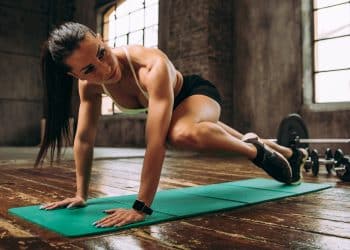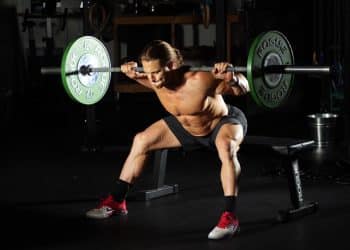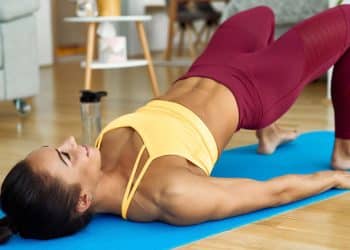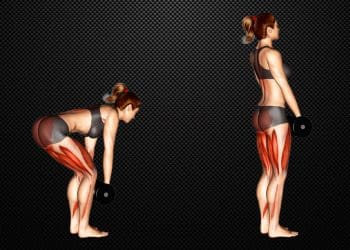Except for pull-ups, chin-ups, and rows, most bodyweight exercises are pushes. That is to say, they involve some form of joint extension and drive your hands or feet away from your body.
While there is nothing wrong with doing lots of pushing exercise, it can mean that several vital muscle groups are left untrained, especially those on the back of your body. Collectively called the posterior chain, the muscles that you CAN’T see in the mirror are critical for a range of functions, including athletic performance and posture control.
An underdeveloped posterior chain can leave you looking like a hunched elderly person, even if you are otherwise fit and lean! Also, failing to strengthen your posterior chain could leave you open to back injuries and pain, which are no one’s idea of fun.
Finally, if you want to run faster, jump higher, or kick or punch harder, you need a well-developed posterior chain.
The good news is that there is a simple solution to all your posterior chain problems that will also improve your posture and your functional mobility – the table bridge.
In this article, we reveal why and how to do the table bridge and provide you with a few variations and alternatives to try.
Level Up Your Fitness: Join our 💪 strong community in Fitness Volt Newsletter. Get daily inspiration, expert-backed workouts, nutrition tips, the latest in strength sports, and the support you need to reach your goals. Subscribe for free!
Table Bridge – Muscles Worked
For such a straightforward exercise, the table bridge involves a lot of different muscle groups. In fact, it comes very close to being a full-body movement. That said, the main muscles developed by the table bridge are:
Hamstrings – located on the back of your thighs, the hamstrings flex your knees and extend your hips. Both of these muscle actions happen during table bridges. The three hamstrings are semimembranosus, semitendinosus, and biceps femoris.
Calves – the calves are a biarticular muscle, meaning they cross the ankle and the knee and affect both these joints. The calves point your toes in a movement called plantar flexion but also work with the hamstrings to flex your knees during table bridges.
Gluteus maximus – known as the glutes for short, this is the largest and most powerful muscle in the human body. However, long periods of sitting can leave your glutes weak and soft. The table bridge is an excellent way to wake up and strengthen your glutes.
Quadriceps – opposing the hamstrings, the quads extend your knees and flex your hips. The four quadriceps are vastus lateralis, vastus medialis, vastus intermedius, and rectus femoris.
Erector spinae – this is the collective name for the muscles that run up either side of your spine. Like the glutes, they are often elongated and weak. Table bridges provide a convenient way to strengthen your back and ward off back pain.
Core – core is the term used to describe the muscles of your midsection. This includes your rectus abdominis, obliques, and transverse abdominis. These muscles contract inward like a weightlifting belt to stabilize your lumbar spine during table bridges.
Trapezius and rhomboids – located across and between your shoulder blades, the traps and rhomboids work together to stabilize your shoulders during table bridges. Because of this, table bridges are a very useful postural exercise for your upper back.
In addition to strengthening these muscles, the table bridge also provides a good stretch for hip flexors, anterior deltoids, and pecs. Weakness in the posterior chain combined with tightness in the anterior chain can lead to a hunched posture, back and neck aches, and even difficulty breathing normally.
How to Do Table Bridges
Get more from table bridges while keeping your risk of injury to a minimum by following these guidelines:
- Sit on the floor with your legs bent to around 90 degrees. Place your hands on the floor just behind your hips, fingers pointing slightly outward or straight ahead as preferred.
- Push your shoulders down and back, drive your palms into the floor, and extend your elbows to lift your butt a few inches off the ground. Look straight ahead.
- Pushing through your heels, push your hips up as high as possible, so your torso is parallel with the floor. You should feel a strong contraction in all the muscles on the back of your body.
- Once you feel ready, increase the tension on the target muscles by pulling your hands and feet toward your butt. Despite the extra muscle tension, your body should not move.
- Hold for the desired duration, e.g., 20 seconds, and then relax.
- Alternatively, instead of doing this exercise isometrically, i.e., statically, you can also do it for reps, pausing briefly at the top of each one.
Table Bridge Benefits
Not sure if table bridges are the right exercise for your workouts? Consider these benefits and then decide!
- Anywhere, anytime – you don’t need any exercise equipment to do table bridges, not even a mat. This makes them ideal for home exercisers, and you can even break up prolonged periods of sitting at your desk with a few reps of table bridges. This is one of the most excuse-free exercises around!
- Adaptable – it’s up to you how hard you contract your muscles during table bridges. You can tense your muscles hard for a brief but intense workout or more gently for longer for something a little less demanding. As such, this exercise is suitable for all levels, from beginner to advanced.
- Stretch and strengthen at the same time – as the table bridge strengthens the muscles on the back of your body, it stretches those on the front. This is the perfect recipe for better posture. Prolonged sitting tends to weaken the muscles on the back and tighten those on your front, so the table bridge is the ideal antidote for all that chair time.
- A great way to warm up before lifting – isometric exercises like table bridges help innervate otherwise dormant muscles so they can generate more force. Doing a few sets of table bridges before deadlifts, for example, can give your deadlift performance a significant boost.
Table Bridge Drawbacks
While table bridges are a mostly beneficial exercise, there are also a few drawbacks to consider:
- Tight shoulders and hips can make this exercise difficult – the problem with a lot of mobility exercises is that you need good mobility to do them, and the table bridge is no different. It’s especially challenging if you have very tight shoulders. The good news is that there are a few more accessible options that are ideal for anyone with limited mobility.
- Limited overload – the main advantage of bodyweight training is also its most notable disadvantage: your body weight. There is no safe way to increase the weight of this exercise, so you’ll have to rely on gradually increasing muscle tension through the application of isometrics. Even then, there may come a point where this exercise is no longer demanding enough.
8 Table Bridge Variations and Alternatives
Table bridges are a highly effective posterior chain, core, and posture exercise, but that doesn’t mean you need to do them all the time. There are several variations and alternatives you can use to keep your workouts productive and interesting:
1. Table bridge from a step
One way to make table bridges easier for people with tight shoulders is to place your hands on a step. This reduces the range of motion at the shoulders while still letting you generate plenty of tension in your posterior chain.
Level Up Your Fitness: Join our 💪 strong community in Fitness Volt Newsletter. Get daily inspiration, expert-backed workouts, nutrition tips, the latest in strength sports, and the support you need to reach your goals. Subscribe for free!
So, if table bridges are tough on your shoulders, do them with your hands on a 6 to 12-inch step.
2. Single-leg table bridge
The single-leg table bridge puts more load on one leg, so it’s more challenging than regular table bridges. Also, if you choose to rest your free leg on your supporting knee, you’ll get an additional hip stretch on that side. As before, you can do this exercise for reps or as a static hold.
How to do it:
- Sit on the floor with your legs bent to around 90 degrees. Place your hands on the floor just behind your hips, fingers pointing slightly outward or straight ahead as preferred.
- Place the outside of your ankle on the opposite knee to form a figure-four shape. Alternatively, you can pull your knee in toward your chest, so your thigh is vertical.
- Push your shoulders down and back, drive your palms into the floor, and lift your butt a few inches off the ground. Look straight ahead.
- Pushing through your heel, push your hips up as high as possible so your torso is roughly level with the floor. You should feel a solid contraction in all the muscles on the back of your body, especially the weight-bearing glute and hammies.
- Once you feel ready, increase the tension on the target muscles by pulling your hands and foot toward your butt. Despite the extra muscle tension, your body should not move.
3. Reverse plank
The reverse plank involves holding a table bridge but with your legs straight. This lengthens the lever, so there is more tension on your posterior chain. However, there is also less stretch on the shoulders, which may make this exercise more appealing for some people.
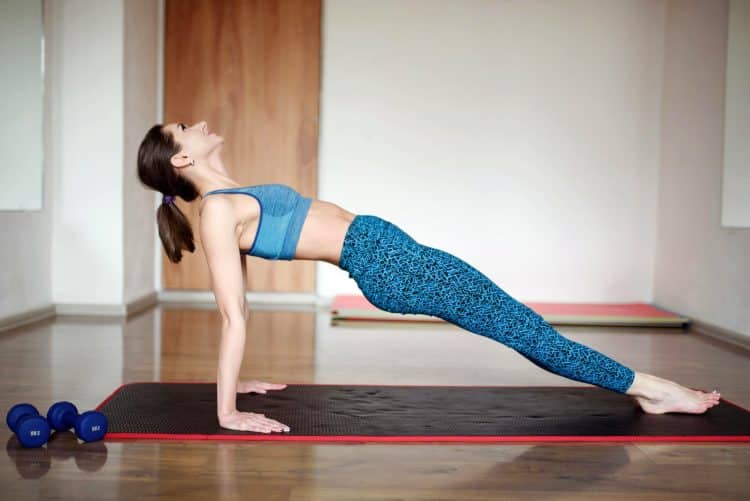
How to do it:
- Sit on the floor with your legs straight. Place your hands on the floor just behind your hips, fingers pointing slightly outward or straight ahead as preferred.
- Push your shoulders down and back, drive your palms into the floor, and lift your butt a few inches off the ground. Look straight ahead.
- Pushing through your heels, push your hips up as high as possible, so your body is straight.
- Hold for the desired duration, e.g., 20 seconds, and then relax.
- Alternatively, instead of doing this exercise isometrically, i.e., statically, you can also do it for reps, pausing briefly at the top of each one.
- You can also do this exercise using one leg at a time.
4. Crab walk
The crab walk is basically a moving table bridge. traveling forward, backward, or sideways will increase the stability demand of this exercise. Crab walks are a good conditioning move for HIIT and circuit training. It’s a popular exercise with the “primal movement” folk.
How to do it:
- Sit on the floor with your legs bent to around 90 degrees. Place your hands on the floor just behind your hips, fingers pointing slightly outward or straight ahead as preferred.
- Push your shoulders down and back, drive your palms into the floor, and extend your elbows to lift your butt a few inches off the ground. Look straight ahead.
- Pushing through your heels, push your hips up as high as possible, so your torso is parallel with the floor. You should feel a strong contraction in all the muscles on the back of your body.
- Once you are in this position, move your hands and feet to scuttle forward, backward, or sideways. Keep your glutes engaged and your hips up throughout.
5. Table bridge plus alternating toe touch
This table bridge variation increases the posterior chain demand AND hits your abs hard, making it a very time-efficient full-body exercise. However, balancing on one hand and foot means you’ll need to be very strong and stable, so only attempt this exercise if you have mastered regular table bridges.
How to do it:
- Adopt the table bridge position with your hips up and posterior chain engaged.
- Keeping your hips up, lift your left leg and right arm, and reach up to touch your toe.
- Return to the starting position, swap sides, and repeat.
- You can also take your elbow to your bent knee, which is somewhat easier.
6. Glute bridge walkout
If tight shoulders mean table bridges are beyond you right now, give the glute bridge walkout a try. It’s a challenging exercise for your posterior chain but very easy on your shoulder joints. This is a good exercise for anyone who wants to train hard but doesn’t have optimal upper body mobility.
How to do it:
- Lie on the floor with your legs bent and feet flat. Drive your heels into the floor and lift your hips into extension.
- Keeping your hips extended, walk your feet away from you and outward to form a wide V. Do NOT let your butt touch the floor.
- Walk your feet back in and repeat.
- Alternate leading legs rep by rep.
7. Barbell hip thrust
If table bridges no longer present much of a challenge, or you want to focus more on strength than mobility and endurance, the barbell hip thrust could be the exercise you have been looking for. With this move, you can go as light or heavy as you wish, so it’s an exercise that grows with you.
While it may lack the upper body involvement of table bridges, this is arguably a better exercise for targeting your glutes and hamstrings.
How to do it:
- Sit on the floor with your upper back against a sturdy bench, legs bent, feet on the floor.
- Rest a barbell across your hips. Put a squat pad or exercise mat around the bar for comfort if necessary.
- Drive your heels into the floor and lift your hips up and into extension. Contract your glutes and hamstrings as hard as possible at the top of the rep.
- Lower your butt back down the floor and repeat.
8. Stability ball neck bridge
The one posterior chain muscle that doesn’t get any attention during table bridges or any of the variations or alternatives is the neck extensors. If you have a “nerd neck,” where your head juts forward, and your neck is constantly flexed, you probably need to work on this often-neglected muscle.
Wrestler’s bridges are one option but, to be frank, they can be dangerous. This modified stability ball neck bridge is much safer.
How to do it:
- Sit on a stability ball. With your core braced, walk your feet forward and lean back, so your shoulders are on the ball. Move your feet a little further forward until you feel the ball pressing against the back of your skull.
- With your hips extended and core tight, press the back of your head into the ball, so a small amount of weight is supported by your neck. Press harder for a more intense workout.
- On completion, walk your feet backward and sit up. If you’ve done this exercise correctly, you should now feel taller and have a more upright posture.
Table Bridges – Wrapping Up
The bridge is one of the few bodyweight back exercises you can do without a pull-up bar, suspension trainer, or rings. And while it won’t build muscle like pull-ups, chin-ups, and inverted rows, bridges are still a valuable exercise for increasing posterior chain strength and spine mobility.
Bridges extend all the joints that are normally perma-flexed when you sit. As such, it’s the perfect antidote for habitual sitting.
Most of us spend 8, 10, 12 hours or more a day sitting, and it’s destroying our posture. A few sets of table bridges will go a long way to undoing some of the damaging effects of sitting.
Interested in measuring your progress? Check out our strength standards for Pull Ups, Deadlift, Chin Ups, and more.

